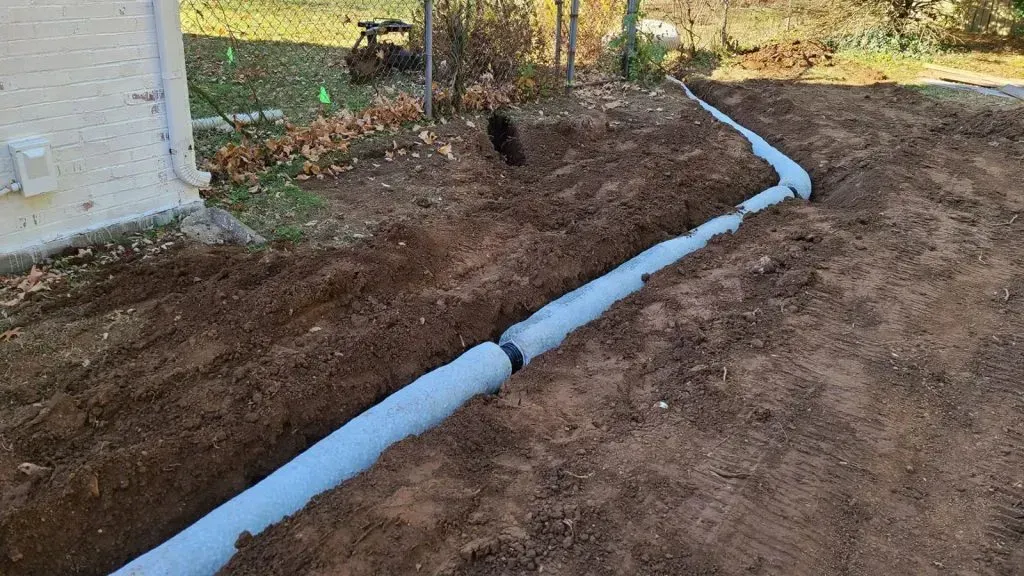
The Bay Area Homeowner's Guide to Drainage Systems

Protecting Your Home, Yard, and Foundation from Water Damage
By Montclair Construction
Serving Oakland, CA, and the Greater Bay Area with Quality Construction Services Since 1983.
Why Drainage Matters in the Bay Area
Homeowners across the Bay Area—from Oakland’s hillside neighborhoods to the flatlands of San Jose—know that heavy rain can cause more than just puddles. The region’s diverse terrain, combined with clay-heavy soils and periodic storms, makes drainage systems a vital part of every home’s structure.
Without proper drainage, even a light winter storm can lead to:
Flooded yards and basements
Foundation cracks
Erosion and soil instability
Mold and mildew growth
At Montclair Construction, we’ve seen firsthand how poor drainage can silently damage homes over time. That’s why understanding how drainage systems work—and when to upgrade or repair them—is one of the best investments you can make in your property’s health and longevity.
Understanding the Basics: What Is a Drainage System?
A drainage system is designed to manage how water flows across and through your property.
Its main goal is to collect, redirect, and disperse water safely away from your home’s foundation and other critical areas.
There are two main types of residential drainage:
Surface Drainage Systems
Handle runoff from rainfall and irrigation on the ground surface (lawns, patios, driveways).
Subsurface Drainage Systems
Deal with groundwater buildup below the soil, preventing seepage into basements or crawl spaces.
Together, they help prevent water-related damage and maintain a healthy soil balance around your home.
Common Drainage Solutions for Bay Area Homes
Because every property in the Bay Area has unique soil and slope conditions, no single system works for everyone. Here are the most effective types of drainage solutions we recommend:
French Drains
A trench filled with gravel and a perforated pipe that redirects groundwater away from your home.
Best for: Sloped properties or homes with wet basements.
Why it works: It lowers the water table and prevents hydrostatic pressure on foundations.
Surface Drains / Catch Basins
Installed in low areas of your yard to collect standing water and channel it to a safer discharge point.
Best for: Yards that flood during heavy rain.
Tip: Regularly clear debris from the grates to keep water flowing smoothly.
Gutter and Downspout Systems
Your first defense against water damage starts at the roof. Gutters capture rainwater while downspouts direct it away from your home.
Best for: Preventing roofline overflow and foundation erosion.
Pro tip: Extend downspouts 5–10 feet from the foundation for maximum protection.
Mold and mildew growth
An underground chamber that collects runoff water and lets it slowly seep into the ground.
Best for: Larger properties or areas with limited storm drain access.
Environmental benefit: Helps recharge groundwater instead of wasting runoff.
Channel Drains (Trench Drains)
Narrow surface drains installed in hardscaped areas like driveways, patios, or pool decks.
Best for: Preventing water pooling on flat surfaces or concrete areas.
Signs You May Have a Drainage Problem
You don’t need to wait for a major flood to realize something’s wrong.
Watch for these early warning signs that your drainage system may be failing:
Persistent puddles or soggy soil after rain
Cracks forming in the foundation or retaining walls
Water stains or dampness in basements or crawl spaces
Erosion near walkways or the base of the home
Musty odors or visible mold growth indoors
Ignoring these issues can lead to long-term structural damage, so it’s best to consult a drainage expert early.
How to Improve Drainage Around Your Property
If your home already shows signs of poor drainage, there are several ways to fix or upgrade your system:
Regrade Your Yard
Ensure your lawn slopes away from your house. Even a gentle 2% slope can help divert water naturally.Extend or Redirect Downspouts
Move water away from the foundation using downspout extenders or splash blocks.Add Gravel or Permeable Landscaping
Gravel paths, rock gardens, and permeable pavers allow rain to soak in rather than pool on the surface.Install a French Drain or Catch Basin
These can manage both surface and subsurface water, ideal for heavy rainfall zones.Regular Maintenance
Clean gutters, inspect drainage lines, and ensure that outlet pipes are free from blockages at least twice a year.
Ignoring these issues can lead to long-term structural damage, so it’s best to consult a drainage expert early.
Professional Drainage System Installation by Montclair Construction
Since 1983, Montclair Construction has been helping homeowners throughout Oakland and the Greater Bay Area solve drainage challenges of all kinds—from simple backyard runoff to full foundation waterproofing.
When you work with us, we:
Conduct a comprehensive site inspection to identify drainage problem areas
Evaluate soil composition, slope, and grading
Design a custom drainage system suited to your property’s layout
Use high-quality, long-lasting materials and proven installation techniques
Ensure compliance with all local stormwater and environmental regulations
Whether you need a complete French drain installation, surface regrading, or just a consultation, our team delivers reliable, efficient, and cost-effective solutions that protect your home for decades to come.
